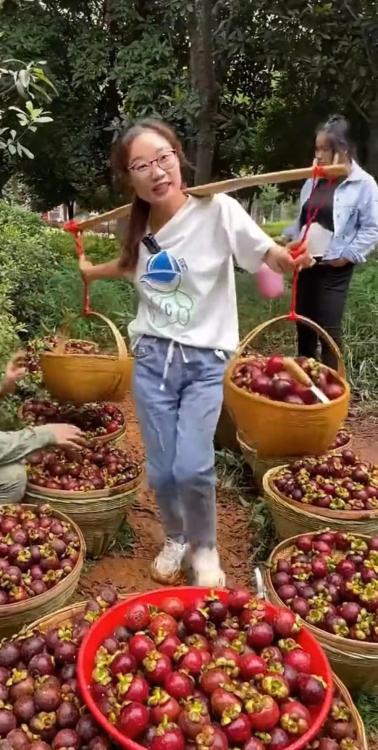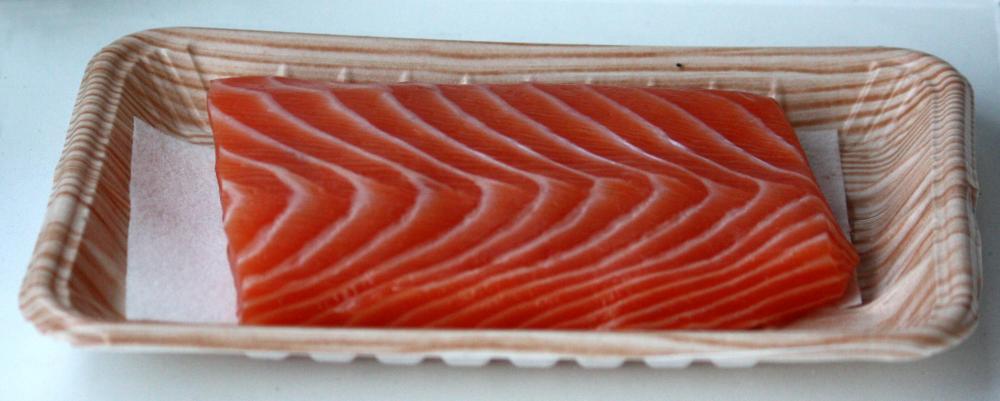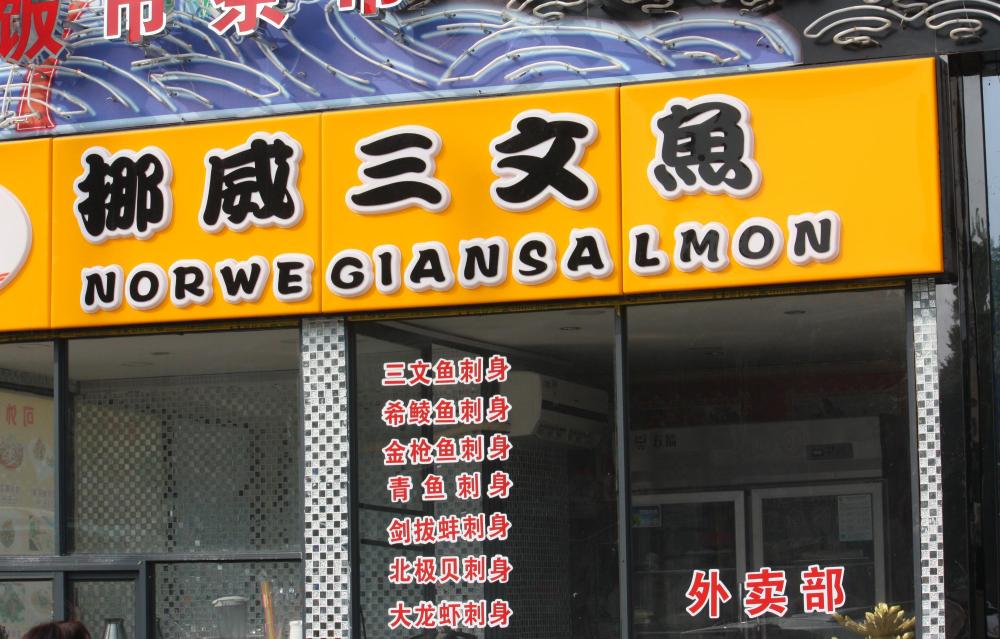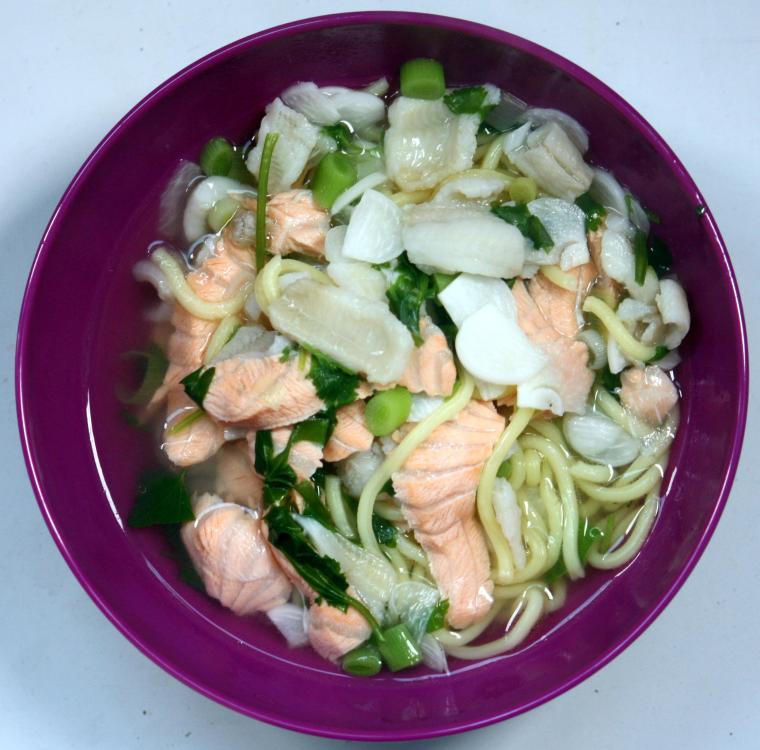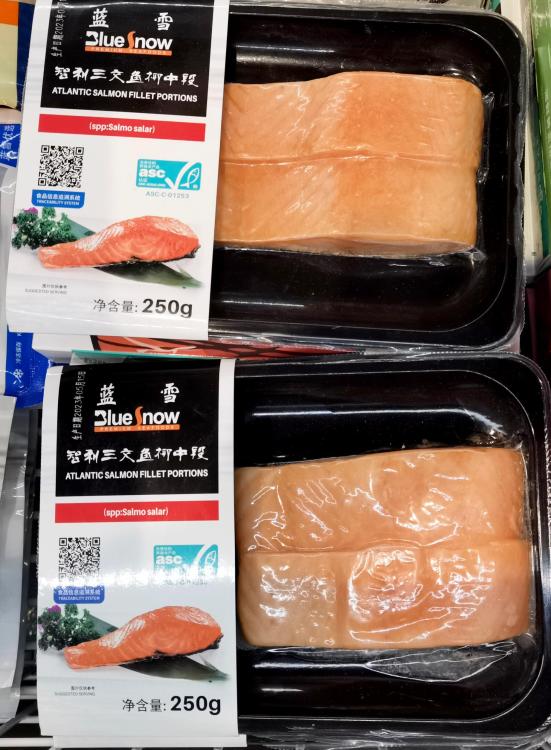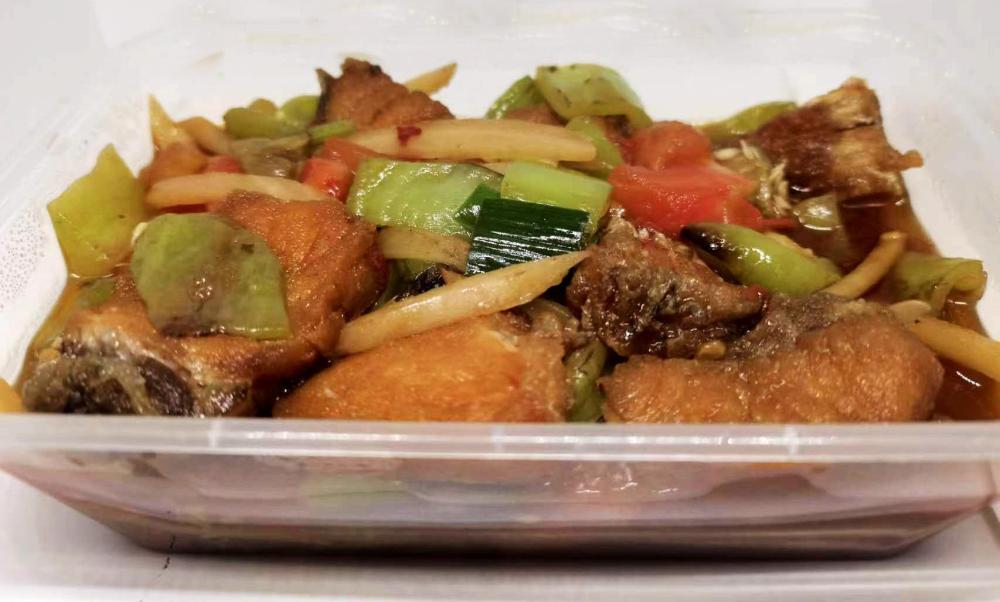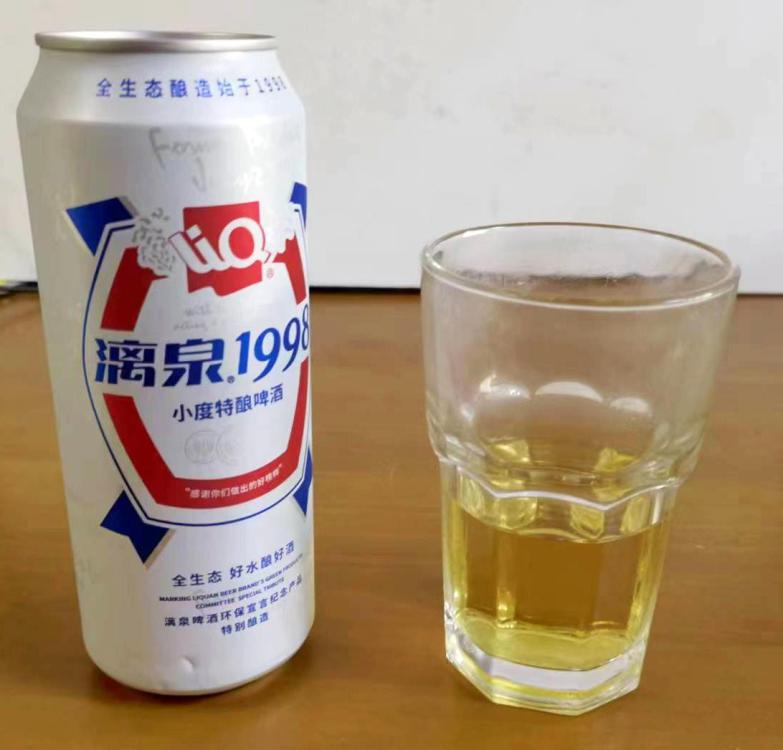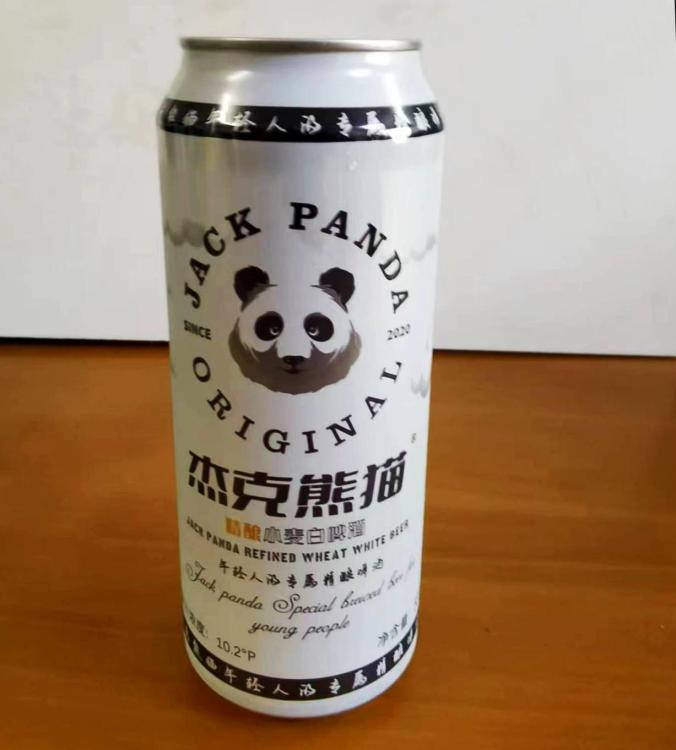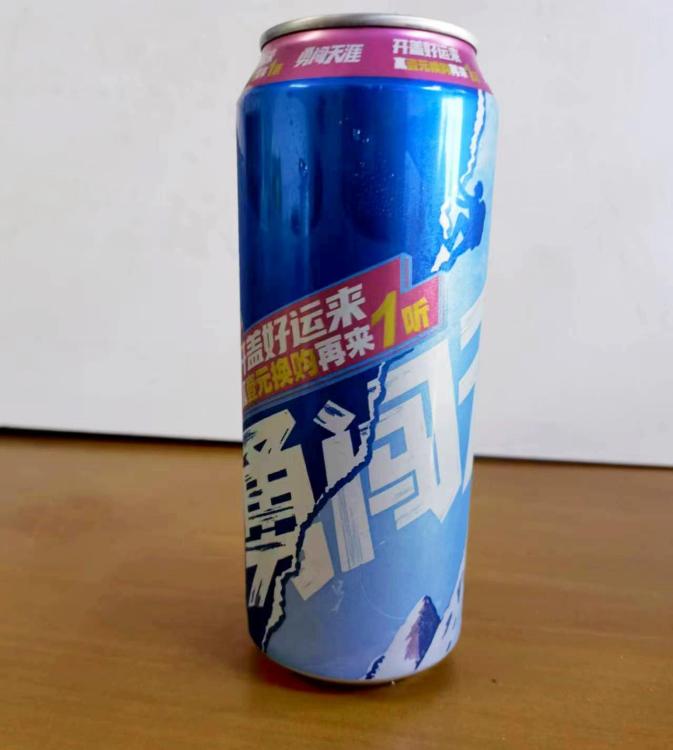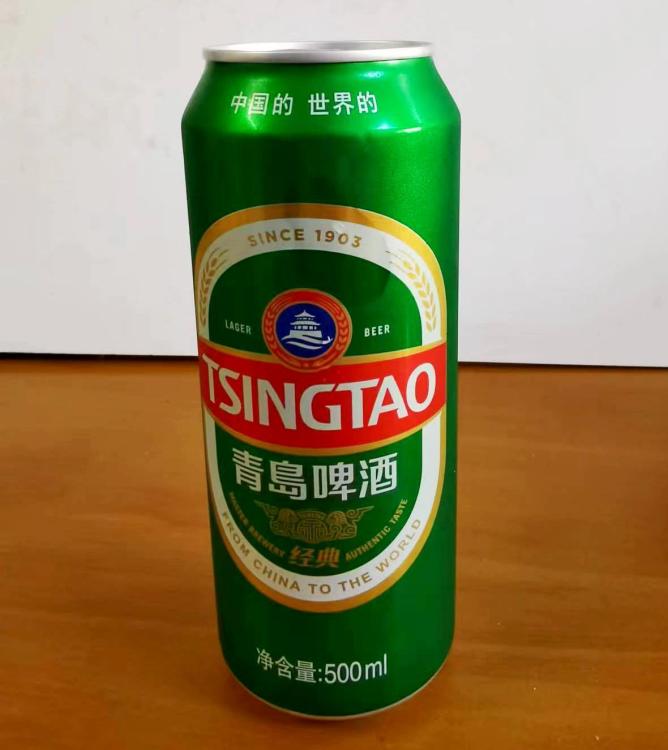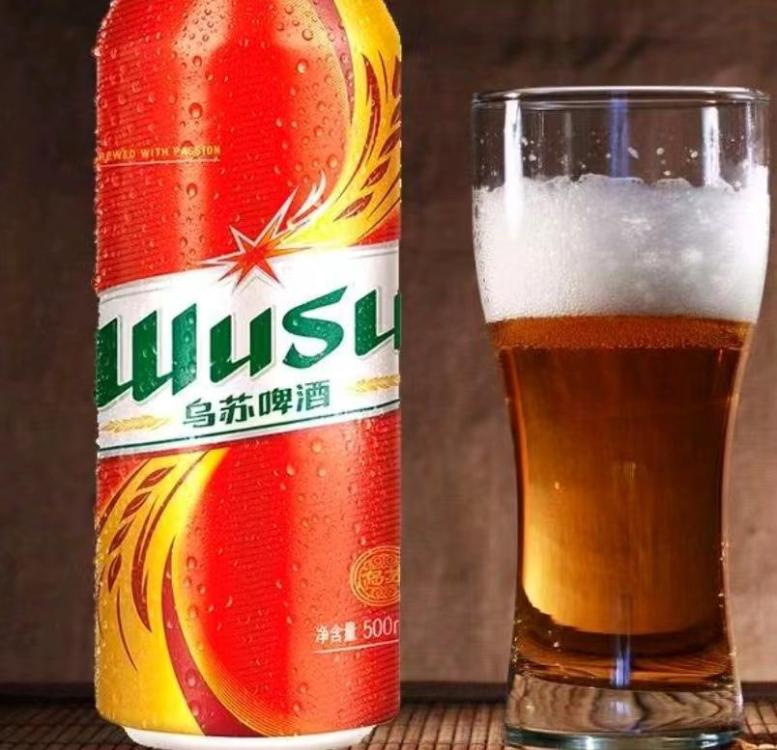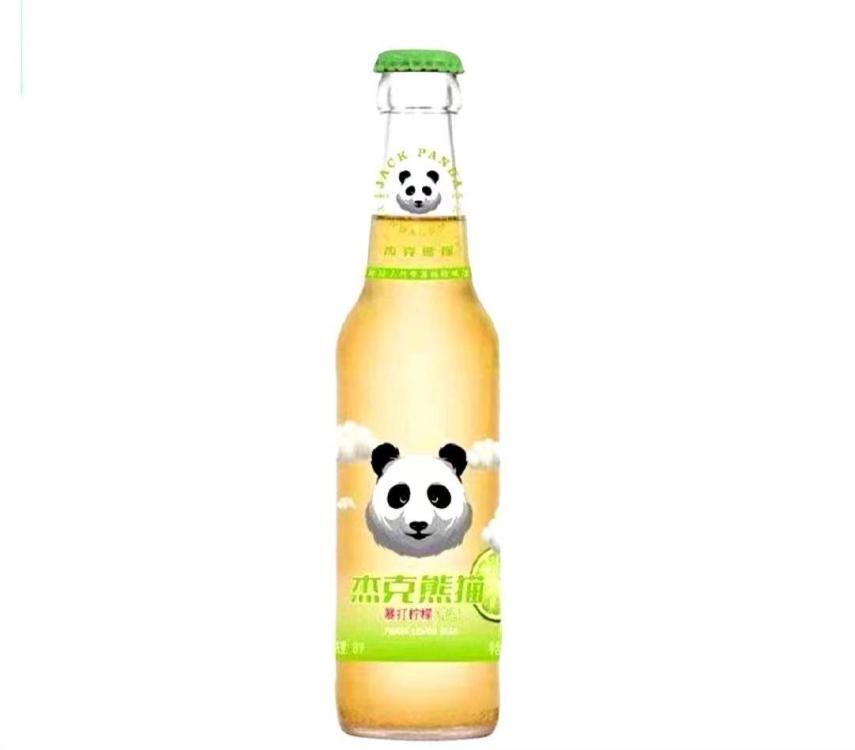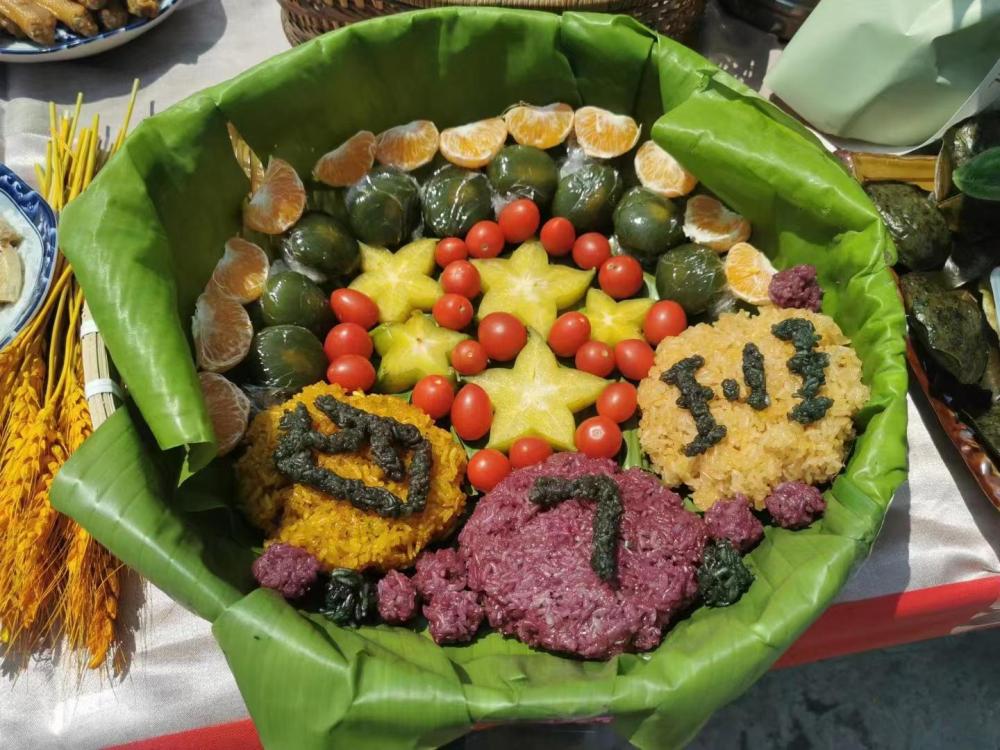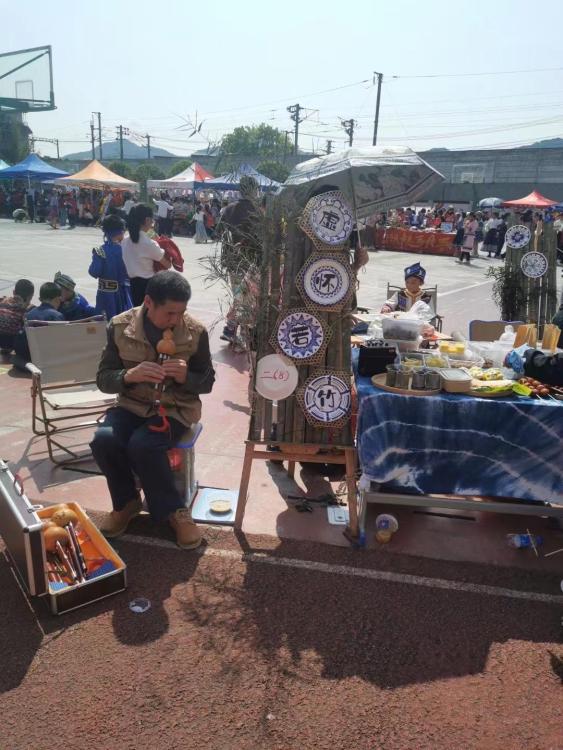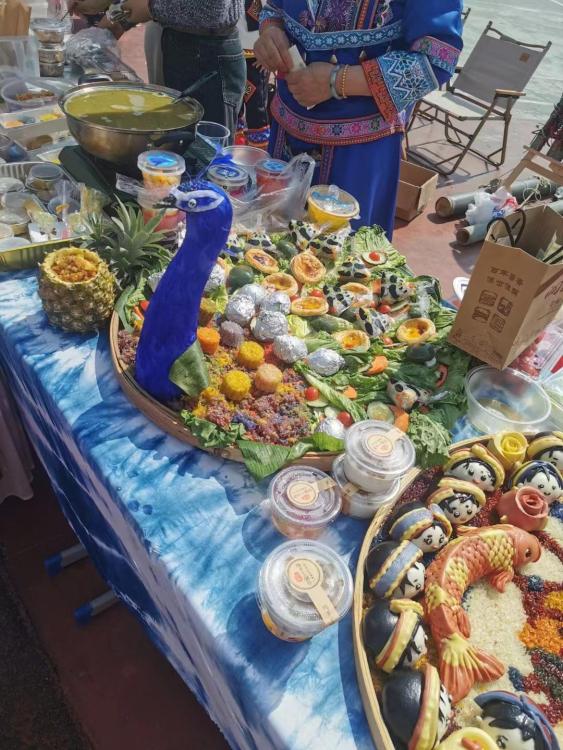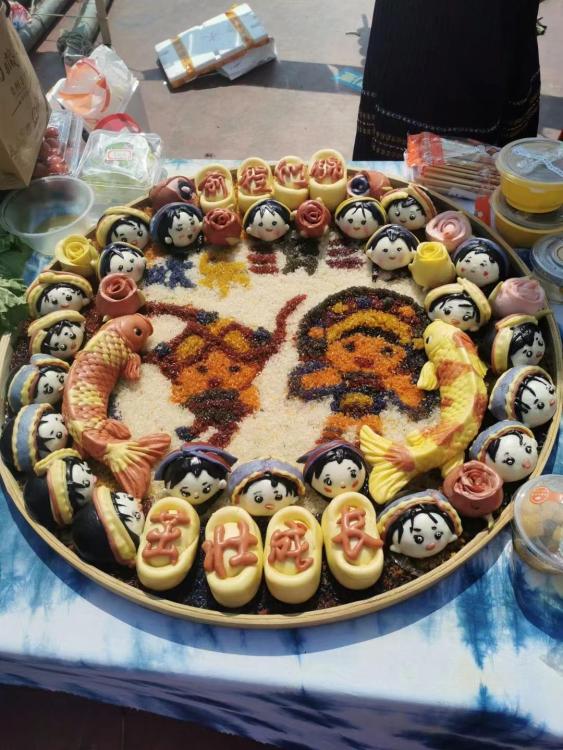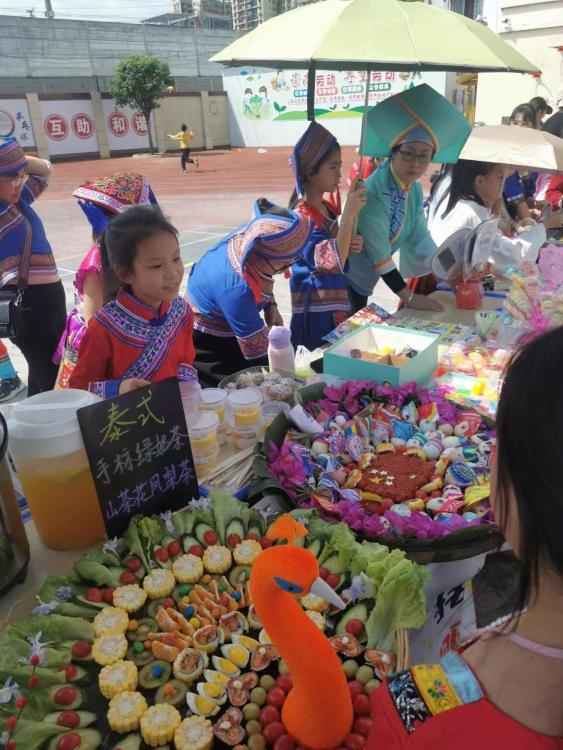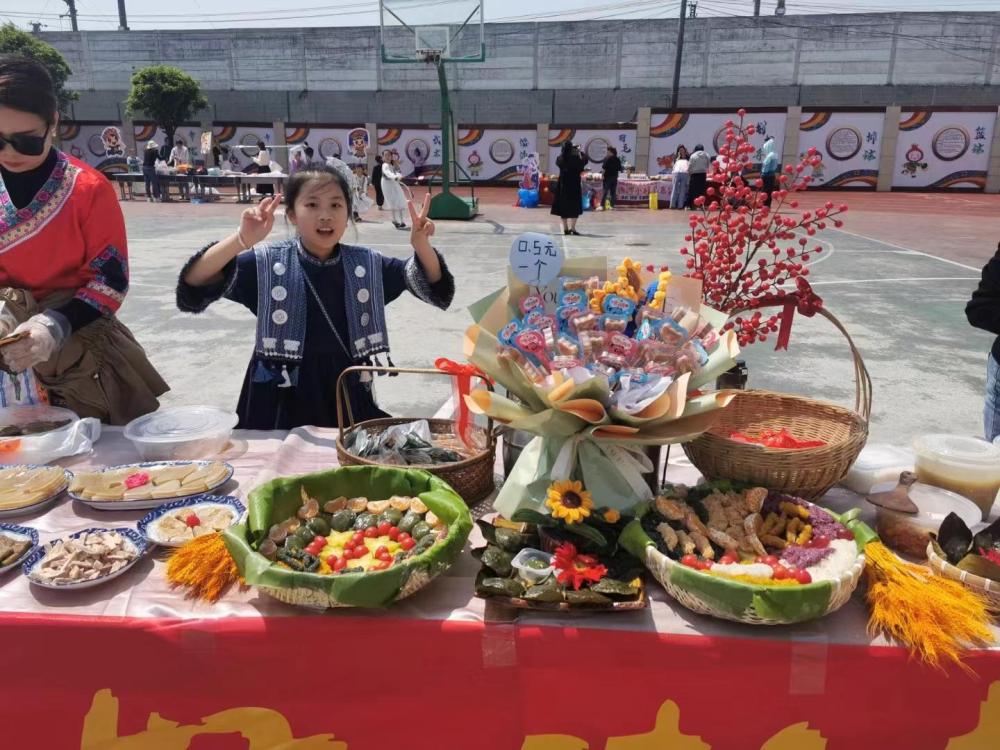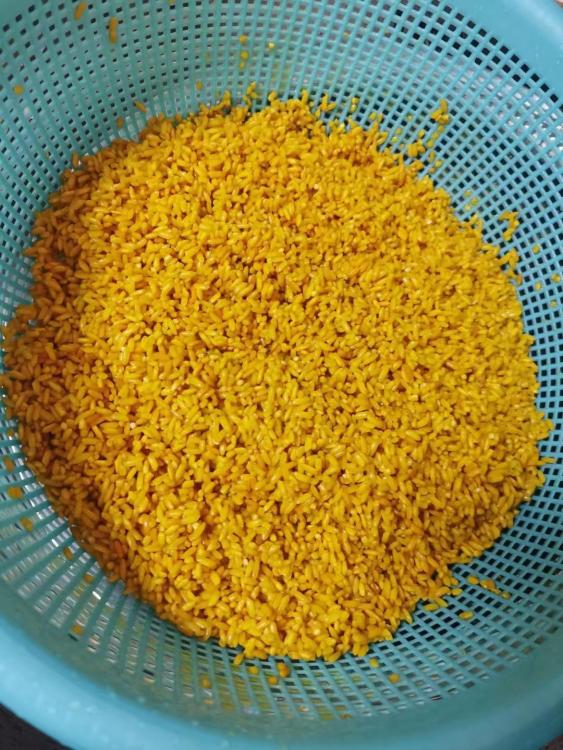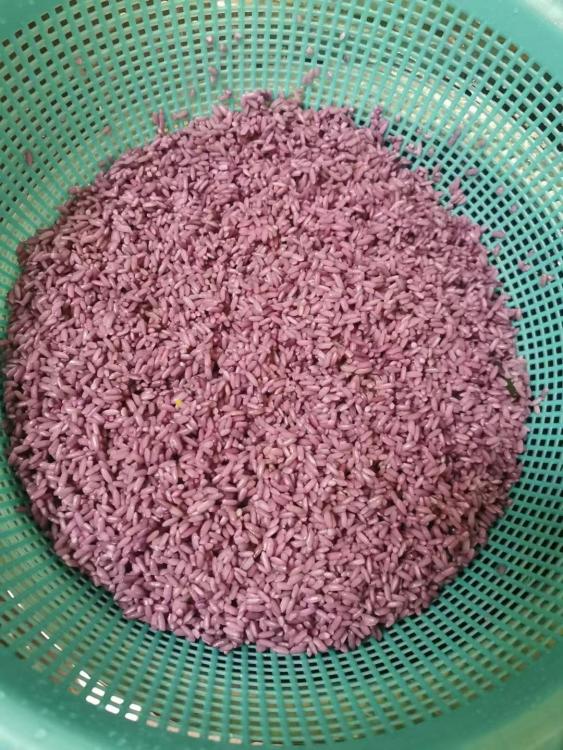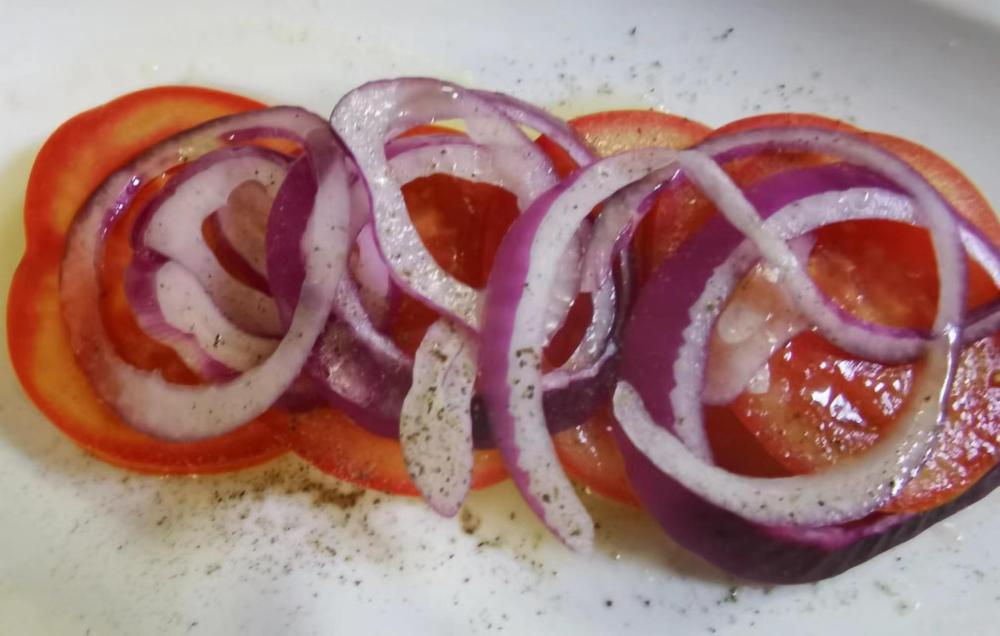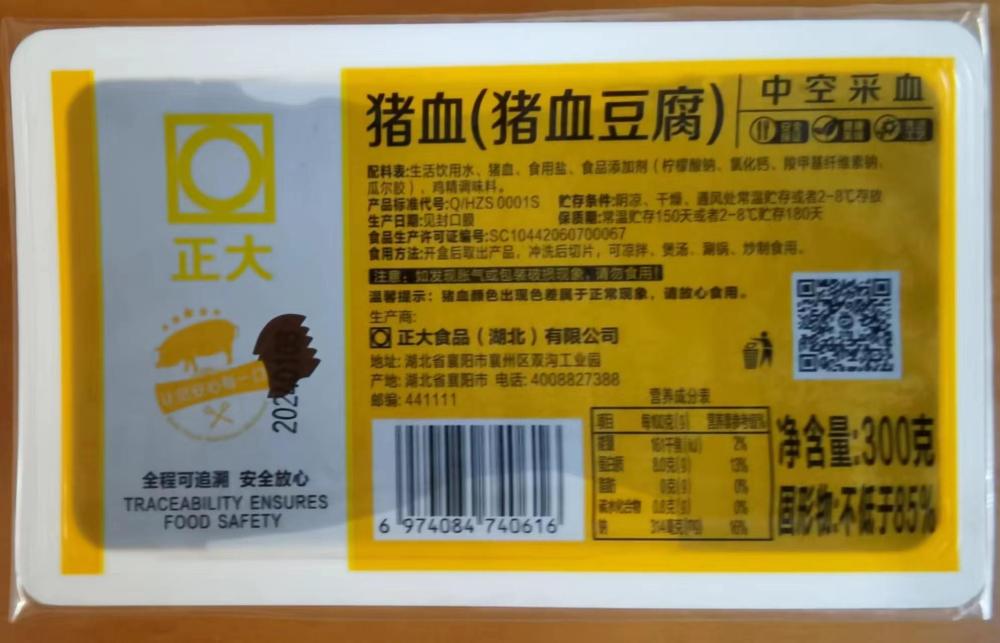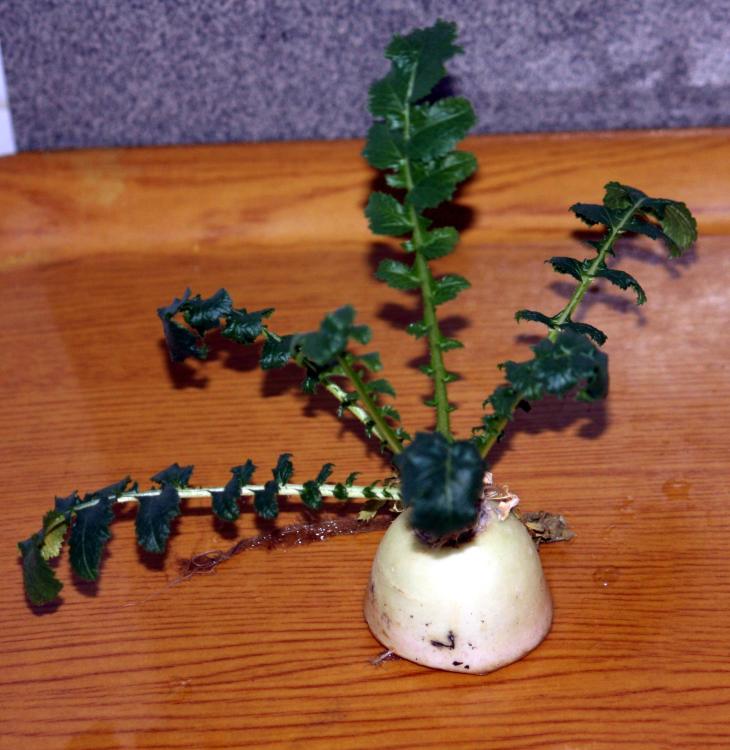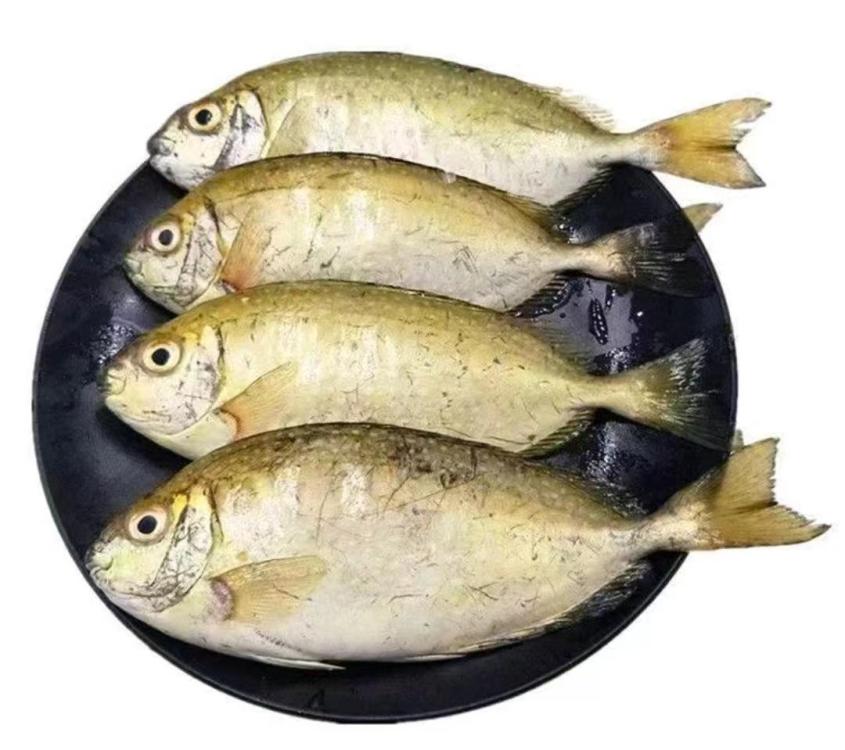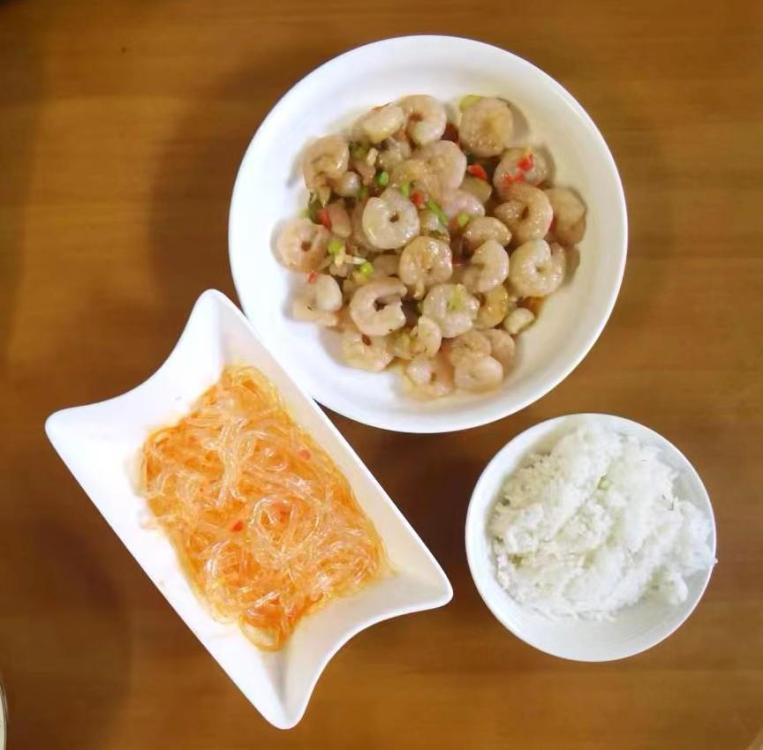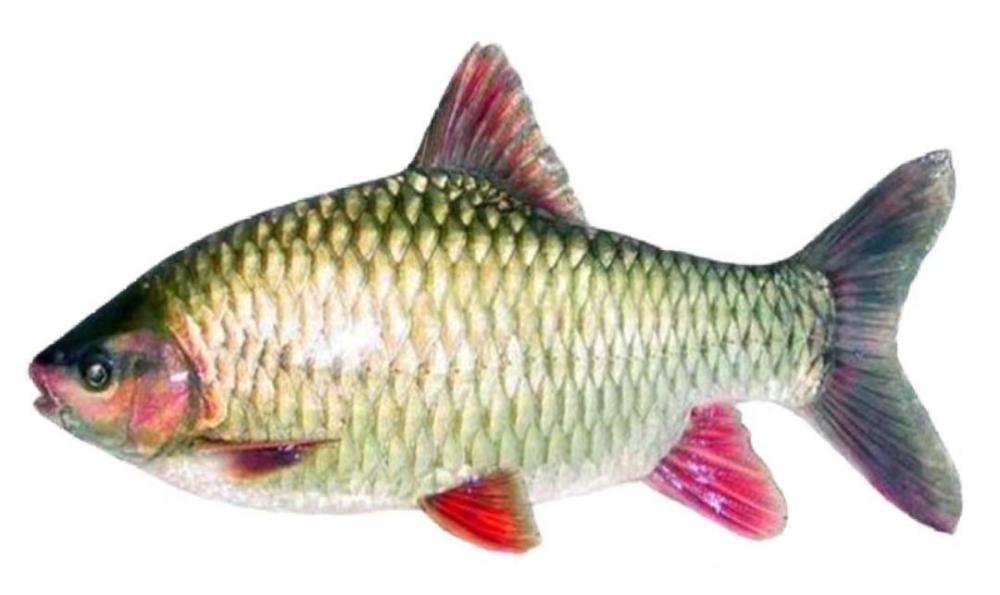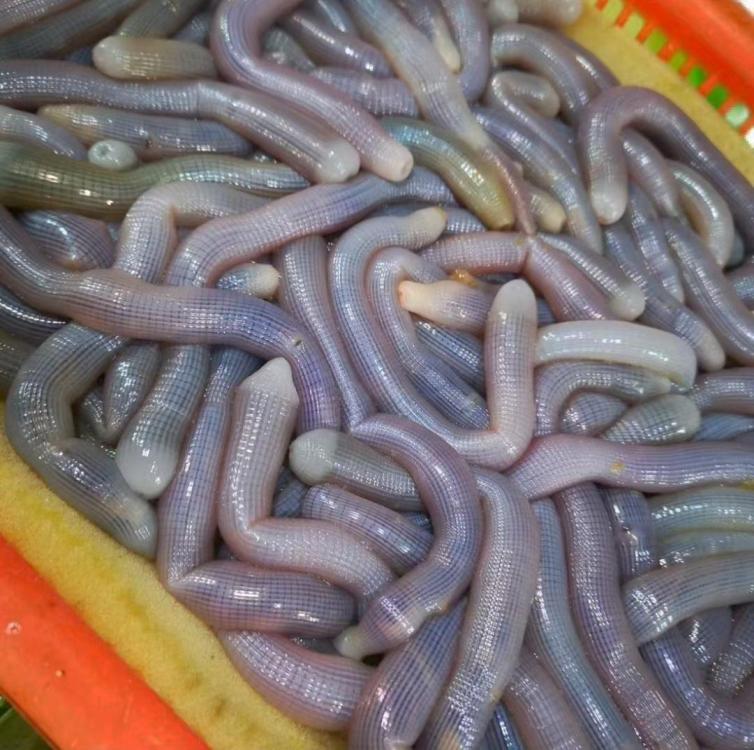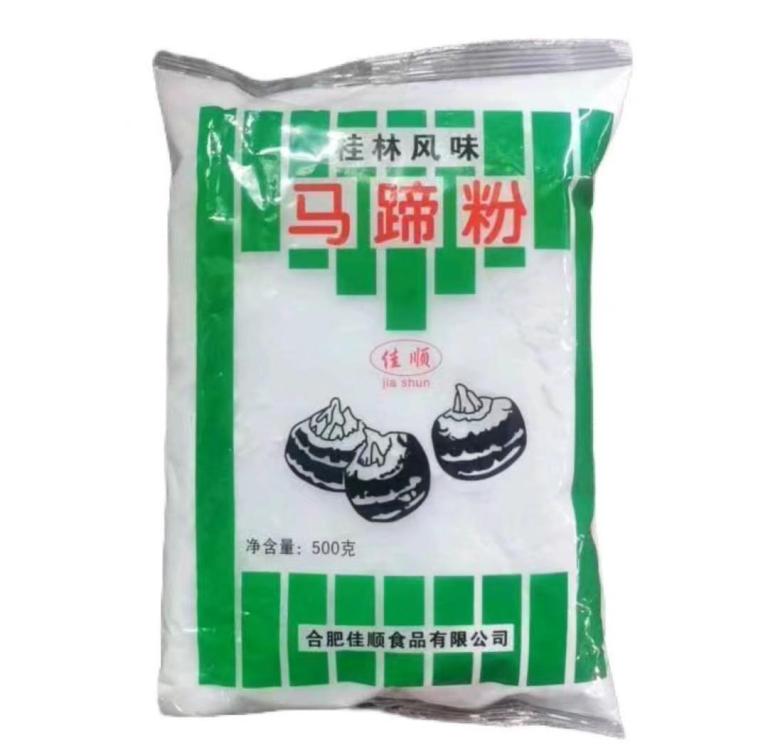-
Posts
15,083 -
Joined
-
Last visited
Content Type
Profiles
Forums
Store
Help Articles
Everything posted by liuzhou
-
Good new for liuzhou. The mangosteen harvest is coming in. They haven't reached my fruit shop yet, but they're on the horizon.
-
No identification doubts about this species but some confusion. S: 鲑鱼; T: 鮭魚 (guī yú) is the semi-official name for salmon but the sound-alike loanword from English, S: 三文鱼; T: 三文魚 (sān wén yú) is more common. Where the confusion comes in is that although some species of Pacific salmon do reach west to China, especially S: 大鳞大麻哈鱼; T: 大鱗大麻哈魚 (dà lín dá má hǎ yú), Oncorhynchus tshawytscha, king salmon aka Chinook salmon, the fish sold here is always Salmo salar, North Atlantic salmon from the other side of the world. It certainly doesn’t swim here. Most salmon in China is imported from Norway, making it an expensive choice for the dinner table. It is only found in the more upmarket supermarkets and in restaurants, especially Japanese restaurants (nearly all of which are China owned and staffed). Supplies from Norway were seriously disrupted when China threw a temper tantrum after the 2010 Nobel Peace Prize was awarded to imprisoned Chinese dissident Liu Xiaobo. Imports were unofficially embargoed for three years and trade talks frozen. Liu died in prison in 2017 of liver cancer, aged 61. In 2021, it was announced that China had successfully harvested its first batch of 3,000 farmed salmon from a Yellow Sea fish culture zone. Efforts to build a full scale salmon farming program are continuing. Meanwhile we are back to eating salmon from the fjords of Norway. There was a dip in supply and therefore consumption during the height of the pandemic but it has now recovered. In my experience, most of the salmon is eaten as sushi* or in other Japanese style preparations. None of my Chinese language cookbooks have recipes. Recipes on the internet are ‘China inspired’ rather than Chinese. Many are just recipes for other fish with salmon substituted for native fish. Not that there’s anything wrong with that. Salmon and sole ramen Smoked salmon can be bought online, but is not of great quality. In 28 years, I've only seen it once in a supermarket. Unfortunately, I bought it. Having been raised by Scotland's premier salmon rivers, my expectations were high. Never have they fallen so low. It was rank. * Sushi was introduced to Japan from China (but not using salmon) in the 8th century CE then adapted and elevated to its current prestige level.
-

A pictorial guide to Chinese cooking ingredients
liuzhou replied to a topic in China: Cooking & Baking
Beer (啤酒 - pí jiǔ) 🍺 is used as an ingredient in many recipes around the world, but I don’t think many people associate it with Chinese cuisine as an ingredient. They’d be wrong. There aren’t so many dishes use it, but two are well-known throughout the country. I’ll came to those in a bit. First I need to look at the ingredient itself. Although not traditional, beer consumption in China is massive and its not just me consuming it. In the early 2000s, China passed the United States to become the world’s largest producer with an average of 42.20 billion litres per annum – it would be higher but Covid and the associated lockdowns bit hard. Most of this production goes to the domestic market, export still being extremely limited but growing. Besides innumerable Chinese manufacturers, the world’s brewing giants are also here both operating on their own and in joint ventures with Chinese companies. It would be a mammoth undertaking, if even possible, to list every type of beer available so I’ll just mention a few of the better known brands. Probably the best know outside China is S: 青岛啤酒 Trad. 青島啤酒 (qīng dǎo pí jiǔ), made in Qingdao in Shandong Province. This is one of only two products in China permitted to use the original transliteration as its name, so it is marketed as Tsingtao Beer. Tsingtao Brewery Co., Ltd. was established in 1903 by German and British merchants as Germania-Brauerei Tsingtao Co., Ltd. In 1916 Qingdao fell into Japanese hands following their invasion of NE China and the company was compulsorily sold to Dai-Nippon Brewery, the producer of Asahi beer, but soon taken back after the First World War in 1918. It then remained in Chinese hands apart from another brief Japanese take over in WWII. After Mao’s revolution and declaration of the People’s Republic in 1949, it was nationalised as a state controlled enterprise as Tsingtao Brewery Company Limited. Today it is the second biggest seller in China. The largest is 雪花啤酒 (xuě huā pí jiǔ), literally ‘snowflake beer’ but usually referred to simply as Snow Beer. This is from Shenyang, capital of Liaoning Province in north -east China, and the company, founded in 1993, is owned by China Resources Enterprise, which has over 90 breweries across China. Heineken holds a 40% stake in the brand. You may not have heard of it, but this is the best selling beer in not only China, but the world. Snow Beer Another giant is 燕京啤酒 (yān jīng pí jiǔ), literally Beijing beer, Yanjing being an old name for China’s capital. Yan is pronounced ‘yen’ in Chinese. The company was established in 1980 and is owned today by Beijing Yanjing Beer Group Corporation. Besides their own brand, Yanjing beer. They have also acquired other brands across China, including my local brand. 漓泉啤酒 (lí quán pí jiǔ) is now made by Yanjing Beer (Guilin Liquan) Co., Ltd. in Guilin, an hour up the rail tracks from Liuzhou. In 1998, then US president, Bill Clinton visited Guilin and they launched a commemorative beer, 漓泉1998 (lí quán 1998), Liquan 1998, which has since become their largest seller. One unusual beer you are unlikely to find outside China for now comes from China’s Xinjiang Uygur Autonomous Region in the far west. Despite being predominantly Muslim, they like a beer or three in the desert and top-ranking is S: 乌苏啤酒; T:烏蘇啤酒 (wū sū pí jiǔ) named after the town of Wusu where it is brewed. Despite its exotic location, the Wusu Group is 100% owned today by Carlsberg. The beer, Xinjiang’s best-seller by far, has a reputation of being easy to drink, but with a potent intoxicating effect that hits the drinker unexpectedly. That reputation has been exaggerated by Carlsberg's marketing people. Finally, wheat white beers are becoming popular with a recent newcomer brand, 杰克相貌啤酒 (jié kè xióng māo pí jiǔ), Jack Panda Beer entering the fray in 2020 with their original wheat white beer. They have somewhat spoiled their image among serious beer drinkers though, by also producing fruit flavoured wheat beers – Mango beer? Passion fruit beer? Lemon beer⁈⁈ Beer for people who hate beer! Jack Panda Lemon Beer. No thanks. Like all almost Chinese beers these above are all light lager types, great for drinking in China’s blistering hot summers. And are cheap. American and European beers, including some which I barely classify as beers, are available and popular – but at a premium price, even when brewed here. They are seen as sophisticated by the poser set. I can buy 吉尼斯黑啤酒 (jí ní sī hēi pí jiǔ) in cans, but rarely do. I save my Guinness fetish till I go to Shanghai or Hong Kong, where I hit the Irish bars. When I do buy it in cans, it’s usually to cook with. So, now on to the food. For the last 28 years, I’ve lived in Hunan and Guangxi. Both the dishes I’m about to mention are from those two provinces, but are popular across China and maybe abroad. Please tell me which, if any, you can find. 啤酒鸭 (pí jiǔ yā), Beer Duck comes in different versions. My favourite is from Hunan but there is also a good version from Sichuan which uses 魔芋 (mó yù), konjak Amorphophallus konjac, the corms of a plant which are used to make a stiff edible jelly. In both versions the duck is chopped (on the bone) into chopstick friendly pieces and braised with chillies in beer. The Hunan version is the simpler of the two, but in my view, the better. Where Sichuan uses doubanjiang and konjac as in this recipe, in Hunan the duck is cooked with fresh green and red chillies (lots), Chinese celery, soy sauce, garlic, bay leaf and star anise and onions. Hunan Beer Duck The second common dish, sold in ersatz versions to Guilin backpackers or tourists is S: 桂林啤酒鱼; T: 桂林啤酒魚 (guì lín pí jiǔ yú), Guilin Beer Fish aka 阳朔啤酒鱼 (yáng shuò pí jiǔ yú), Yangshuo being the backpacker hell-hole near Guilin where the backpacker mob descend. I’ve written about the beer fish here at length, but below is the description of the dish. Beer Fish Of course hold back a can or bottle to wash down either your duck or fish. Should you find yourself in China, watch out when drinking beer with the locals. They see it as a competitive sport; drinking games and toasting are obligatory. Not how I like to get my daily swallow. 🍺🍺🍺 干杯 (gān bēi)!! -
Yes. The fish are edible. I've eaten them. They are very traditional and represent longevity. They are dough as you say.
-
No. As I said in my first post of this topic However, that is how it is described in all my Chinese sources; the 'sculpin' designation comes from them. There is nothing in any English sources that I could find to confirm or deny. If you know of any reliable sources I may have missed I'll be happy, as always, to edit my post. Thanks.
-
Thursday here* will be the third day of the third month by China’s lunisolar calendar. In Chinese, this is known as 三月三 (sān yuè sān, literally ‘third month, third (day)). For the ethnic minority people around here, the Zhuang, the Dong, the Miao, the Yao and more, this is the major festival of the year. Guangxi province is the only one in China which marks this an official public holiday, such is its importance as an event. Guangxi has the highest number of ethnic minorities in China – twelve, many of whom hold this festival. I should note that these ethnicities are not limited to Guangxi or indeed China. The Hmong people are a sub-group of the Miao and are found world-wide. Other groups have large presences in SE Asia and elsewhere. I have Tujia friends in the USA and Canada and Zhuang in the UK. They will be celebrating, too. One local school celebrated this today by holding a mini food festival. The kids learned how to make the ethnic minority’s special dishes such as five-colour rice and others. They wore their traditional ethnic costumes identifying their ethnicities and, by the look of it, had fun while learning about their culture. While I wasn’t there, a close friend was there as her daughter is a pupil in the school. She has sent me these images with permission to share. *China operates one time zone; the USA is between 12 and 15 hours behind so it may be on Wednesday for some of you.
-
Last night. Pork tenderloin, marinated in olive oil, juice of a lemon, crushed coriander seeds, black olives, chilli, salt. Drained and fried the pork then 'braised' briefly in the marinade. Added coriander leaf less than a minute before serving. Served with a simple tomato and red onion salad dressed with olive oil and black pepper - and rice.
-

A pictorial guide to Chinese cooking ingredients
liuzhou replied to a topic in China: Cooking & Baking
This ingredient contains ingredients but doesn't contain one ingredient in its name. S:猪血豆腐; T: 豬血豆腐 (zhū xuè dòu fu) is 'pig blood tofu' and the ingredients are water, blood, salt and preservatives. No tofu, but is so named as it resembles tofu in texture and can be used in the same ways. It is also a common addition to soups and hotpots. For those who’ve never tasted this coagulated blood, it is naturally slightly sweet, with little metallic taste. Best washed down with snake’s blood wine, perhaps. -
I mainly use them in soups, cut into sizeable chunks. Daikon and pork rib soup is common around here. I also sometimes sprout them to use the tops as greens.
-
Now a marine fish. This is 泥猛(鱼) (ní měng (yú), literally ‘mud fierce (fish)’), Siganus spinus, Little Spinefish, Scribbled Rabbitfish, Blunt-nosed Spinefoot, Bluntnosed Spinefish, Marbled-spine Foot, Scribbled Spinefoot, Spiny Rabbitfish, or Spiny Spinefoot. Native to the coastal reefs of western Pacific from Japan, down through SE Asia and to Australia, it reaches a length of up to 28 cm / 11 inches but is more commonly around 18 cm / 7 inches. Map: AquaMaps (2019, October). Computer generated distribution maps for Siganus spinus (Little spinefoot), with modelled year 2050 native range map based on IPCC RCP8.5 emissions scenario. Retrieved from https://www.aquamaps.org. The species is known for often having a maze-like patterned skin, which unfortunately doesn’t show up on my picture. A better example is here. Care is need in handling them as the fins are poisonous and can inflict painful stings. They aren’t particularly common on fish counters here but are frequently used in fish pastes. There is some aquaculture, but it is limited.
-

"Trademark bully": Momofuku turns up heat on others selling "chili crunch"
liuzhou replied to a topic in Restaurant Life
Not really. The main, but not only, original descriptive name is 香辣脆 (xiāng là cuì), which translates as 'flavour hot crisp or crunch or brittle'. This doesn't however feature on the jars in China. For the US, the company translated this as 'crisp' as a description, but it isnt their trademark; just a description. Their trademark is the name of the company, 老干妈 (lǎo gān mā*) with the distinctive script and the picture of Ms. Tao. I very much doubt she cares; although her lawyers may. She makes and sells 1.3 million jars a day, most of which are sold in China. Her pockets are very deep. * literally 'old godmother' or 'old adoptive mother' -
This may sound like a stupid question, but are your self-check outs "manned"? My local supermarket has six self-check stations and there is always one member of staff standing there, 90% of the time looking bored and 10% helping out the clueless like me. Whether she carries out any surveillance, I doubt, but she may be a deterrent. Actually, I've only requested her (it's always a her) assistance once which was when one of my purchases somehow scanned twice when I only passed it over the scanner once. She cancelled one of them. She also dispenses plastic bags if you request (and pay) for one. There is a button on the machine to request bags of various sizes and prices. From what I’ve seen, most customers prefer the manned, traditional check-outs. I go for speed and not lining up behind the idiots who always seem surprised when they have to pay, then spend forever trying to work out how their cellphone works! 99% of payments are made by cellphone in China. I haven’t used or carried cash for years.
-
More an adventure in eating in east Asia, I'd say. All pizzas in China come with corn, including the infamous durian pizzas. Domino's pizzas in Vietnam, too. Mì too. But generally I find more sub-par bánh mì in the north than in the south. After all, they originated in HCMC / Saigon. But back to Japan. Thanks for this whole account of your trip. Fascinating side of a Japan I've never seen.
-
S: 花古鱼; T: 花鼓鱼 (huā gǔ yú) or S: 花鼓鱼; T: 花鼓魚 (huā gǔ yú), Trachidermus fasciatus, the somewhat off-puttingly named rough skin sculpin, is another freshwater fish once among the most popular in China. However, thanks to ‘development’ along the lower Yangtse river where it thrived, the fish is now endangered in China. It is still found in southern Guangxi, but in very limited numbers. Some are imported from Korea and Japan. At the equivalent of $30 USD in markets, it is the most expensive freshwater fish I’ve encountered. I’ve never eaten it, so can’t comment on flavour. Some local restaurants have it on their menu at more than double the market price. $60+ for a fish that is only typically 11.5 cm / 4½ inches long. The OED describes it as a 'small worthless fish'.
-
I mentioned tilapia in this post. Here is a variation on that theme. S: 黄立鱼; T: 黃立魚 (huáng lì yú). Yellow tilapia. This is a yellow bellied and yellow finned mutation of the common tilapia, Oreochromis mossambicus. It is otherwise identical in use and taste. Suddenly fashionable for no good reason that I can see.
-
The jellyfish is gelatinous with the texture of a particularly al dente pasta. It isn't cooked as such but is processed. and cured before being sold. I have written more about that in this topic. Note: of the 4000+ species of jellyfish, only around a dozen are edible and they must be processed properly to be safe to eat. Don't be trying to eat what you come across at your local beach!
-

A pictorial guide to Chinese cooking ingredients
liuzhou replied to a topic in China: Cooking & Baking
I was searching earlier for their scientific name which I'd forgotten and a couple of websites mentioned Dune, without which I wouldn't have understood your reference. I've never seen the movie or read the book. -
I am not suggesting that anyone shouldn't make dim sum at home; merely that few do, as can be seen by the entries in this near-20 year old topic with extremely few examples.
-
Spicy shrimp with garlic, Shaoxing, soy sauce and scallions. 海蜇 (hǎi zhé), Rhopilema esculenta, an edible jellyfish. Rice.
-
What a bizarre topic. 95% of the historic contributions here have absolutely nothing to do with making dim sum at home (there are more posts about Chinese banking systems). I understand the lack of home cooking of dim sum posts, though. Few people ever do it. In fact S: 点心; T: 點心, (Mandarin - diǎn xin; Cantonese - dim sum), however delicious, is merely an aside at a social event, 飲茶 (Mand: yǐn chá; Cant: yum cha), drinking tea or 早茶 (Mand: zǎo chá; Cant: jou cha), morning tea. These places can be cacophonous early in the morning. Conviviality and conversation is the point. Food, not so much. The food served, the dim sum, often doesn’t lend itself to home cooking and for many items, considerable skill and experience is needed. The best dim sum chefs are highly regarded in the same way as the best sushi or ramen chefs are in Japan. Despite that, there are many recipes on the internet. Some read OK; most don’t; and some are just sadly clueless.
-
A local rarity. S: 青竹鱼; T: 青竹魚 (qīng zhú yú), Cyprinidae Spinibarbus, green bamboo fish is a freshwater fish mainly found in Guangxi and Yunnan. It occupies fast moving waters, including the river flowing through Liuzhou. It is vegetarian. It is also farmed but is a slow grower, so less desirable to fish farmers wanting a quick return - i.e. most of them.
-

A pictorial guide to Chinese cooking ingredients
liuzhou replied to a topic in China: Cooking & Baking
北海 (běi hǎi, literally ‘north (of the) sea’) is a city on Guangxi’s southern coast on the Gulf of Tonkin near the border between China and Vietnam. It gets a large number of domestic tourists looking for its beaches and seafood ; few foreign. The city and especially 外沙岛 (wài shā dǎo), Waisha Island, connected to the city by a short bridge, gets the bulk of the visitors and is full of seafood restaurants. Most of my fish and seafood (and all seawater species) come from there. One special attraction is S: 北海沙虫; T: 北海沙蟲 (běi hǎi shā chóng), Sipunculus nudus, Beihai sandworms. a local delicacy. They are also referred to in English as ‘peanut worms’. These on average, 15 cm / six inch long, unsegmented worms are picked from Beihai’s beaches early in the morning when they emerge from the sand. Fried until crispy, they have a pleasant umami-laden flavour. They are often added to congee, which is how I have eaten them. Today, they are being cultivated in limited but growing numbers. Away from their natural habitat of Guangxi, they are sold dried. I can buy them fresh. $9.00 USD per 250 grams. Need I mention, they are also used in TCM? In that context they are sometimes called ‘sea cordyceps’ as they are claimed to have similar medicinal benefits to those parasitic fungus infested worms? -

A pictorial guide to Chinese cooking ingredients
liuzhou replied to a topic in China: Cooking & Baking
Two more starches used in the kitchen. 1) S: 红薯淀粉; T: 紅薯澱粉 (hóng shǔ fěn), sweet potato starch. 2) S: 马蹄粉; T 馬蹄粉; (mǎ tí fěn) Chinese water chestnut (Eleocharis dulcis or E. congesta) starch. -
Dim Sum items like these are seldom made at home. However the internets have several recipes of varying appeal. A search for 'lo bak go', the Cantonese name should point you in the right direction. I'd avoid the Woks of Life recipe, though. When a recipe writer says he doesn't know what he is cooking, it hardly inspires confidence!


